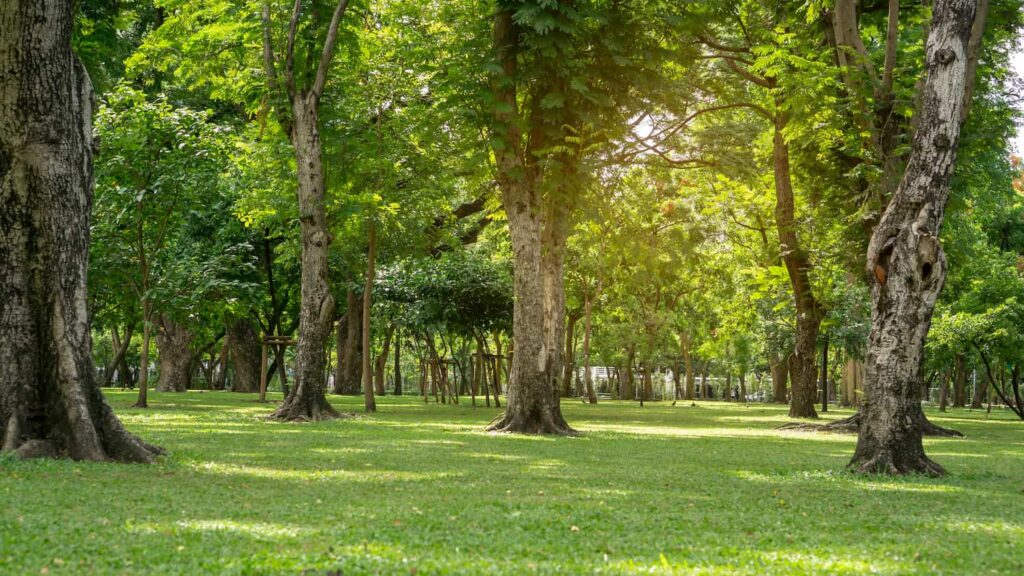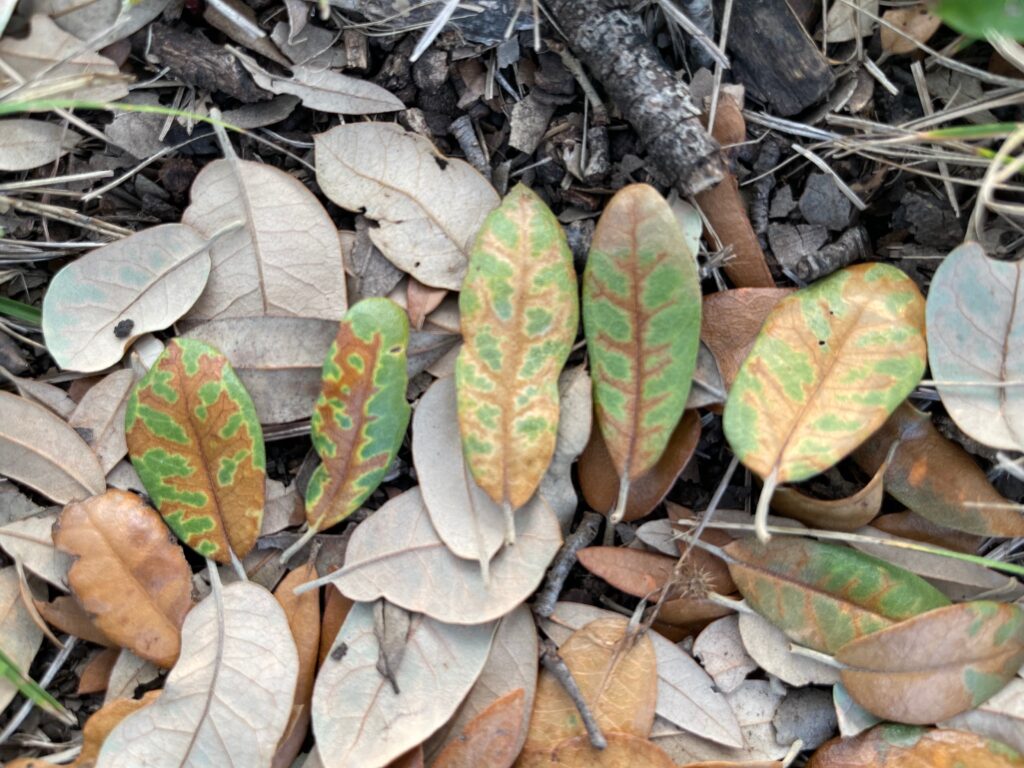Our family-owned, locally-based tree care company is devoted to battling Sick Trees and the lethal tree disease known as oak wilt using ISA Certified Arborist and Tree Doctors in Blue Ridge, TX!
Oak wilt is a deadly fungal disease that affects oak species in Blue Ridge, TX, and Surrounding Cities in North Texas. The fungus travels through oak root systems and can kill trees within weeks or months of infection. Prevention of oak wilt is key to helping protect the oak species in Blue Ridge, TX.
Oak Wilt Prevention in Blue Ridge, Texas
Oak wilt is a fungal disease that can lead to severe damage and death of oak trees in Blue Ridge, Texas. Identifying and diagnosing oak wilt is critical to saving the infected trees and limiting its spread. Here are the steps to identify and diagnose oak wilt in Blue Ridge, Texas.
Identification of Oak Wilt:
The oak wilt fungus spreads through specific ‘beetles’ attracted to the smell of sap from wounded trees, or through interconnected root systems. Identifying the symptoms of an oak wilt infection involves monitoring the trees and knowing what changes to watch out for.
- Discolored Leaves: The infected tree leaves turn brown, bronze, or yellow from the margin and curl at the edges.
- Leaf Loss: Infected leaves will fall off the trees, even when it is not autumn or winter.
- Dying Limbs: An individual branch or limb will die in the summer, and after a few weeks, many tree limbs will be dead.
- Fungal Mats: These mats develop under the bark in the late stages of the disease, signify that the tree is almost dead.
- Infection Zone: Infection is most likely emanating from the middle or a lower branch on the tree, so careful attention should be paid to those areas of the tree.
Diagnosis of Oak Wilt:
Correct diagnosis of oak wilt involves a few steps:
- Inspection: Professional tree doctors can conduct surveys specifically for oak wilt in Blue Ridge, Texas. Inspectors assess the area for signs of oak wilt, including discolored leaves and dying limbs, and differentiate oak wilt from other oak diseases. 2. Laboratory Testing: Once an inspector suspects oak wilt, samples from the tree are analyzed in a laboratory to confirm the presence of the fungus.
- Testing Methods: Fungal testing is done to determine the presence of the fungus. Chemical tests, UV light tests, and a class of tests that involve the amplification of DNA from the fungal samples are some testing methods that are most widely used to identify the fungus.
- Consulting with an Arborist: If oak wilt is identified, a licensed arborist should guide the homeowner about the different methods to prevent and treat oak wilt infections.
Conclusion of Oak Wilt:
Early identification and diagnosis of oak wilt are crucial to saving the infected trees and preventing its spread across Blue Ridge, Texas. Through monitoring of tree symptoms (discolored leaves, leaf loss, dying limbs, fungal mats, and infection zone), professional tree inspection, laboratory testing, and consulting with an arborist, homeowners can ensure their trees get the right treatment and help stop the spread of oak wilt. Prevention is key, and it is essential to take active steps to minimize stress on the trees, avoid cutting them during the wrong season, sanitize pruning tools, and protect their underlying root systems to protect oak trees in Blue Ridge, Texas, and keep them healthy for generations to come.
Tree Care Services in Blue Ridge, TX


- ISA Certified Arborist
- Disease & Fungus Management
- Live Oak & Post Oak Treatment
- Plant Health Care Services (PHC)
- Oak Wilt Treatment
- Tree Care
- Tree Disease Treatment
- Tree Doctor Consultation
- Tree Fertilization & Nutrition
- Tree Health Injections
- Tree Insect Management
- Tree Maintenance
- Tree Mulching
- Tree Pest Control
- Tree Surgeon
- Sick Trees
Tree Disease Treatment in Blue Ridge, TX
We provide Tree Disease Treatment Services in Blue Ridge, TX, for both your residential and commercial properties.
- Actinopelte Leaf Spot: Known as Tubakia, this may occur in many oak tree varieties; however, it is most frequently seen in red oak trees.
- Anthracnose: This is a type of fungal disease that affects trees and shrubs.
- Bacterial Leaf Scorch: Unsightly spots appear on oak tree foliage that looks as if the leaves on your oak tree have been burned. Laboratory testing is needed for definite confirmation.
- Crown Gall: can range from small, wart-like growths to large, woody masses that can seriously damage or kill the infected plant.
- Dutch Elm Disease: Dutch elm disease is a serious fungal disease that affects elm trees, particularly American elm trees.
- Hypoxylon Canker: Trees that are already unhealthy and weak are prime targets for this hazardous, deadly fungal tree disease.
- Leaf Disease Outbreaks Across Texas: Excessive rainfall and cooler-than-average temperatures during the spring season can trigger fungal oak leaf disease outbreaks.
- Oak Leaf Blister: Most oak tree varieties are susceptible to invasion by this fungal disease that causes raised, circular spots on oak foliage during cooler spring weather.
- Oak Wilt: is a destructive tree disease that mostly affects Red and Live Oaks.
- Sudden Oak Death: First reported in 1995, this rapid-spreading deadly tree disease is caused by a water mold pathogen. It has destroyed millions of oak trees throughout Texas.
- Rapid Oak Decline: Weather extremes such as drought or heavy rainfall have made Savannah post oak trees vulnerable to root rot, cankers, and wood-boring insects.
If you have sick trees or tree disease on your property in Blue Ridge, TX, contact us today to talk to a Tree Doctor!
Certified Arborist That Treats Tree Disease and Sick Trees
Contracting a licensed, Arborist is vital to inspecting sick trees and preventing tree disease on your property.
If Oak Wilt is identified, fungicides are available through macro infusion and injections to help minimize spread.
Call us today to talk to our Tree Doctors in Blue Ridge, TX, at (817) 799-7101 and schedule your free consultation with our ISA Certified Arborist and tree care expert!

